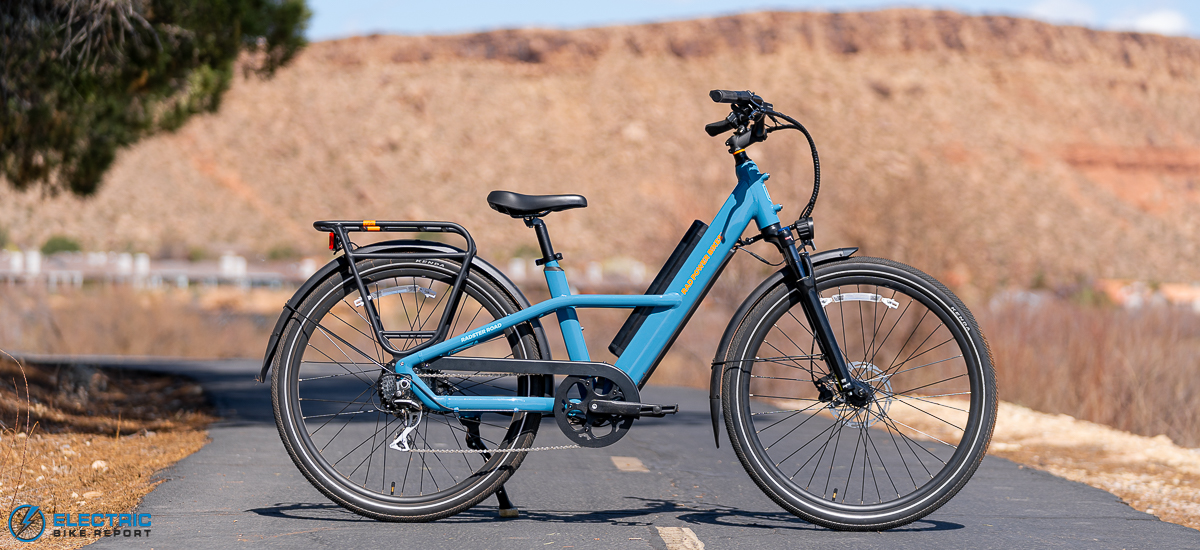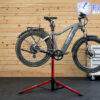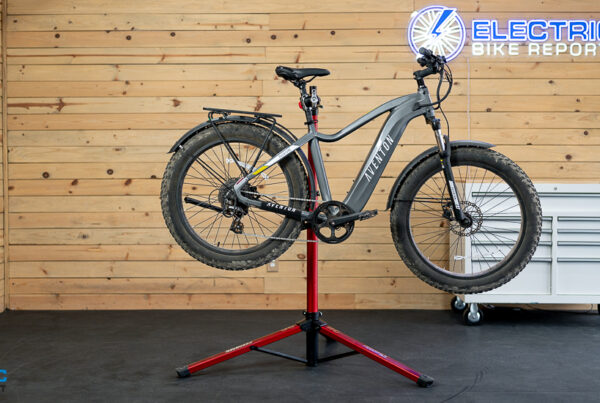Overall, we were impressed by the Radster Road’s ride quality. Many of the bike’s upgrades served it well, though there were some areas with room for improvement.
I found the Radster’s motor to be one of its best features; with 750W of power, the ride felt exhilarating! The torque sensor was remarkably responsive, which created a smooth, fun, and natural experience.
I also liked that the bike had such flexibility in its speeds; where the previous generation of Rad’s bikes were limited to a Class 2 setting, the Radster offers the ability to switch between Class 1 (no throttle), Class 2 (throttle and PAS up to 20 mph), Class 3 Limited (PAS up to 25), and full Class 3 (PAS up to 28) speeds. In Class 3 settings, the throttle functions up to 20 mph.
The Radster Road is offered in two frame sizes: a Regular that fits riders from 4’11” to 5’8” and a Large for those between 5’7” and 6’4”. In terms of comfort, the bike checked most of the boxes that we look for. Our test riders (who are mostly in the 6’ range) were generally comfortable on the Large frame; we thought the saddle felt soft and supportive, while the handlebars and grips themselves were shaped well. With that in mind, the handlebar height and riding position felt somewhat awkward, blending Dutch/commuter styling in an unexpected way. To compensate for this, I found myself lowering the saddle and reducing my leg extension to balance out the fit, but this was not ideal.
For the record, we tested the Radster Road and the Radster Trail simultaneously, and found that the Trail’s low-rise handlebars felt much better, and more suited to the bike’s geometry. Fit and comfort are personal factors, so we recommend trying the bike to determine if changes are needed; the Radster Road’s stem and handlebars can be replaced if needed with relatively minimal cost and effort (though this is still an extra step).
The Radster’s frame design varies between sizes. The Regular offers a true step-thru design and a sub-20” standover height, while the Large features what I would dub a mid-step frame with a 24” standover. Prospective owners using a bike rack should consider its weight, as even with the battery removed, the bike’s 67.5 lbs is above average for a commuter. We liked the bike’s design overall, however, as it follows the industrial styling of 2023’s RadRunner 3 Plus.
I found the Radster’s handling to be predictable; with 29” wheels it is well-suited for acceleration and comfort but trades some agility. The 2.2” tires added stability to the ride and performed well when cornering. I appreciated the Suntour suspension fork with 80 mm of travel, though with most of my weight on the saddle, it did not greatly impact the feel of the ride.
The Radster includes all of the commuter essentials: lights, fenders, and a 55-lb capacity cargo rack. Rad’s website currently lists 43 optional accessories that can also be added to upgrade the bike further.
Another feature that stood out was the new display. Its clean lettering, simple layout, and fantastic readability felt contemporary and high-tech. This was enhanced by the faceted 6-button control panel and Rad’s inclusion of turn signals (a feature I personally feel should be on every commuter e-bike)!
A final element worthy of discussion is the Radster’s uncommon suite of security features. The bike comes with a security keycard that can be used to unlock it on startup; alternatively, users can choose a 4-digit passcode (or no security at all). We recommend the optional cafe wheel lock to round out the bike’s theft protection.
.
.
.
#Rad #Power #Bikes #Radster #Road #Review
Source link








